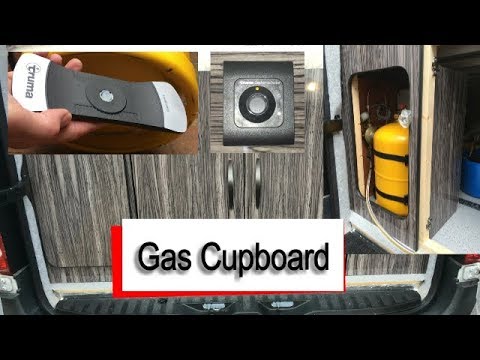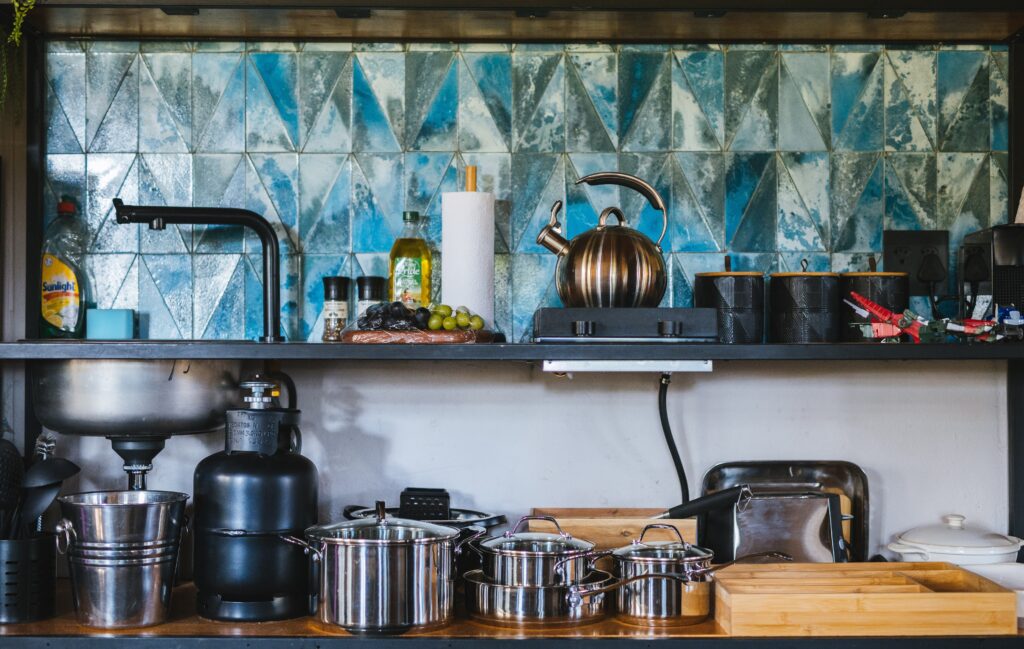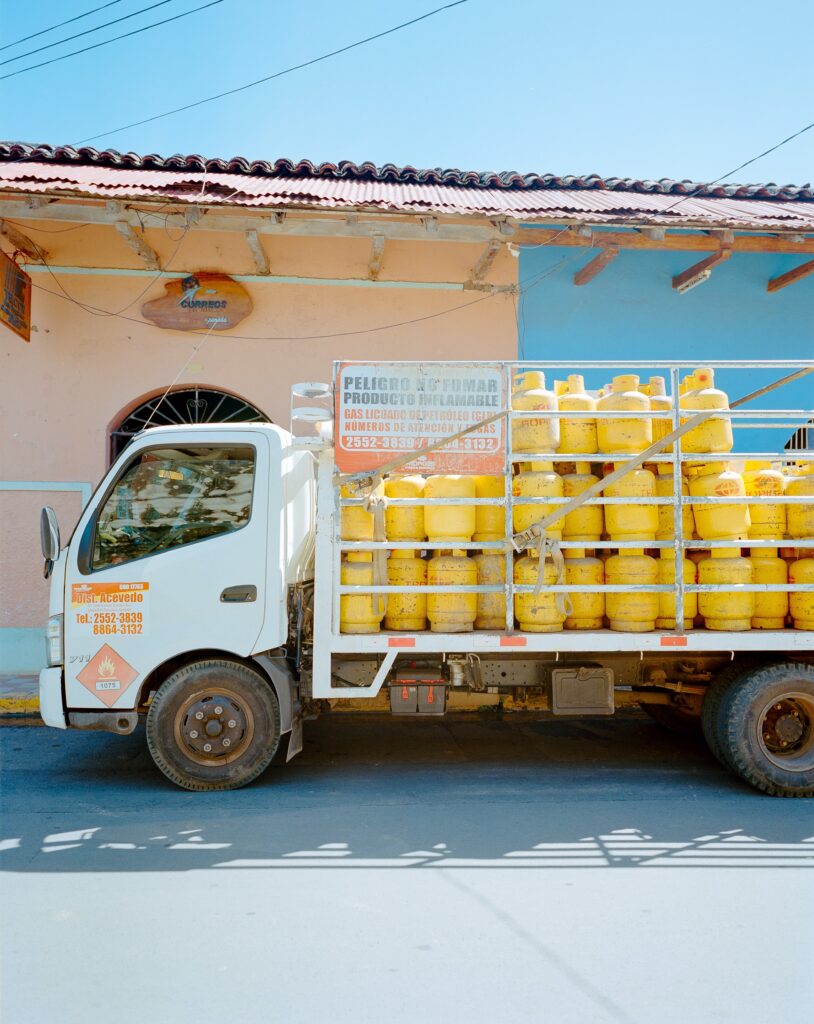
In this article, I will be discussing the process of building a sealed gas cupboard for a Gaslow refillable LPG cylinder in a Mercedes Sprinter Van conversion. The main focus of this content is to highlight the compliance of the gas cupboard with current European Standards. I will provide details about the equipment used in the video, which can be purchased through provided links. Furthermore, I will encourage viewers to share the videos on social media and subscribe for future videos in this series, as it is part of an ongoing European tour. It is important to note that the article will cover various aspects of the gas cupboard, including its construction, adherence to European regulations, usage of specific equipment, and safety precautions.
Throughout the content, I will stress the significance of having the system checked by a qualified engineer and obtaining a certificate for the gas chamber. Additionally, I will explain the purpose and functionality of the gas solenoid valve, isolation valves for the cooker and water heater, dropout vent, Troma Level Control Device, and gas level app. Proper installation techniques, such as the use of compression fittings and gas-safe jointing compound, will also be discussed. Lastly, I will give a brief overview of the next videos in the series, which will cover topics such as solar panels and van security.
Building a Sealed Gas Cupboard for a Gaslow Refillable LPG Cylinder in a Mercedes Sprinter Van Conversion
When converting a Mercedes Sprinter van into a cozy living space, one of the essential aspects to consider is the gas supply system. It is crucial to ensure that the installation meets the European standards for safety and functionality. In this comprehensive article, I will guide you through the process of building a sealed gas cupboard specifically designed for a Gaslow refillable LPG cylinder in a Mercedes Sprinter van conversion.

Gas Cupboard Compliance with European Standard
Before delving into the details of building the gas cupboard, it is essential to emphasize the importance of complying with the European safety standards for gas installations. These standards aim to ensure the safety of occupants and bystanders, as well as the functionality and reliability of the system. By adhering to these regulations, you can have peace of mind and enjoy your travels without any safety concerns.
Equipment Used in the Video
In the accompanying video, I will demonstrate the process of building the sealed gas cupboard. To complete this project, you will need several key pieces of equipment, including a Gaslow refillable LPG cylinder, compression fittings, a gas solenoid valve, isolation valves, furniture board, mastic, brackets, straps, and a dropout vent. These components are readily available and can be purchased from various suppliers specializing in campervan conversions.
Where to Purchase the Equipment
To ensure that you obtain high-quality equipment that complies with European standards, it is recommended to purchase from reputable suppliers. Some well-known suppliers for campervan conversion equipment include Vanbuild Online, Camperite Leisure, and CampervanCulture. It is always advisable to carefully research and compare products, prices, and customer reviews before making any purchases.
Encouraging Sharing and Subscribing
If you find this video and article helpful in building your sealed gas cupboard, I kindly request that you consider sharing it with friends or others who may benefit from the information. Additionally, subscribing to my channel will enable you to receive updates on future videos covering various aspects of campervan conversions, such as solar panels and van security.
Part of a European Tour
Building a sealed gas cupboard for your van conversion is just one of the many exciting projects you’ll undertake as you prepare for a European tour. It is crucial to ensure that your gas system is compliant with the regulations in each country you plan to visit. By following these guidelines, you’ll be well-prepared and able to enjoy hassle-free travels across Europe.
Building the Gas Bottle Chamber in the Van
Start by selecting a suitable location within your Mercedes Sprinter van for the gas bottle chamber. It is recommended to choose a well-ventilated area with easy access, away from potential heat sources or electrical components. Once you have identified the ideal spot, you can mark the dimensions of the gas cupboard and begin building the structure.

Location of the Filling Point
When designing the gas cupboard, it is crucial to consider the location of the filling point. This should be easily accessible from the outside of the van, allowing you to refill your Gaslow LPG cylinder without the need to remove it from the cupboard. Ensure that the filling point is installed securely and provides a tight seal to prevent any gas leaks.
Sealing the Gas Chamber
To ensure a fully sealed gas chamber, it is essential to use appropriate sealing techniques. Firstly, carefully measure and cut the furniture board according to the dimensions of the gas cupboard. Use screws or adhesive to secure the board in place, ensuring a tight fit. Next, apply mastic to any gaps or joints to create an airtight seal, preventing any gas from escaping.
Following European Regulations
When building the gas cupboard, always refer to the European regulations and guidelines pertaining to gas installation in vehicles. These regulations specify the required safety measures, such as proper ventilation, adequate clearance distances, and reliable gas fittings. Following these regulations will ensure that your gas system is safe, efficient, and compliant.

Certification from a Qualified Engineer
After completing the construction of the gas cupboard, it is highly recommended to seek certification from a qualified engineer. This certification will confirm that your gas installation meets the necessary safety standards and can provide you with peace of mind during your travels. An engineer can inspect the system, conduct necessary tests, and issue a certificate of compliance, which may be required when traveling across Europe.
Gas Chamber Design and Functionality
The design of the gas chamber should prioritize both functionality and safety. Ensure that the gas cylinder is securely held in place using brackets and straps to prevent any movement during vehicle motion. The gas chamber should also incorporate a ventilation system to allow for the accumulation and dissipation of any potentially dangerous gases. This system should consist of an intake vent and a dropout vent, ensuring a constant flow of fresh air and the removal of any gas buildup.
Building the Gas Cupboard with Furniture Board
I recommend using furniture board to build the gas cupboard due to its durability and suitability for indoor installations. This material is resistant to moisture, easy to clean, and lightweight, making it an ideal choice for a campervan conversion. When constructing the cupboard, ensure that the furniture board is securely fastened to prevent any movement or damage during travel.

Sealing the Cupboard with Mastic
Mastic is a versatile and reliable sealing compound commonly used in construction projects. To seal the gas cupboard effectively, apply mastic to all joints, gaps, and connections within the cupboards. This will ensure an airtight seal, preventing any gas leaks and ensuring that the gas system remains safe and functional throughout your journey.
Gas Connections with Compression Fittings
For the secure and reliable connection of gas pipes and components, compression fittings are recommended. These fittings provide a tight seal, ensuring that no gas can escape or leak from the system. When installing compression fittings, ensure that they are correctly tightened and regularly inspect for any signs of wear or damage.
Gas-Safe Jointing Compound
When joining gas pipes and fittings, it is crucial to use a gas-safe jointing compound. This compound, applied to the threads or joints, enhances the seal and prevents any gas leaks. It is essential to select a gas-safe jointing compound that is compatible with the materials used in your gas system and is approved for use in camper van conversions.
Gas Solenoid Valve and Isolation Valves
To enhance the safety and convenience of your gas system, consider incorporating a gas solenoid valve and isolation valves. A solenoid valve acts as an electrically controlled switch, allowing you to shut off the gas supply remotely. Isolation valves, on the other hand, provide individual control over specific gas appliances or sections of the system. These valves allow for easier maintenance, repairs, or isolation of faulty components.
Installing a Dropout Vent
A dropout vent is an integral component of the gas chamber, allowing potentially dangerous gases to escape in the event of a gas leak. The drop-down vent should be located near the bottom of the gas cupboard and directed towards the ground to prevent any harmful gases from accumulating in the living space. Regularly inspect and clean the dropout vent to ensure proper functionality.
Monitoring Gas Level with Troma Level Control Device
To conveniently monitor your gas level, consider installing a Troma Level Control Device. This device allows you to accurately measure the remaining gas in your cylinder using ultrasound technology. By monitoring the gas level, you can plan refills accordingly and avoid running out of gas during your travels.
Using a Gas Level App
Alternatively, you can utilize a gas level app on your smartphone or tablet to monitor the gas levels in your cylinder. These apps use Bluetooth or Wi-Fi connectivity to communicate with a gas level sensor attached to the gas bottle. With the app, you can easily check the gas level and receive notifications when a refill is required.
Securing the Gas Chamber with Brackets and Straps
To ensure the safety of your gas system during vehicle motion, it is essential to secure the gas chamber with brackets and straps. These will prevent any movement or shifting of the gas cylinder, reducing the risk of damage or gas leaks. Regularly inspect the brackets and straps for signs of wear or damage and replace as necessary.
Sealing the Gas Cupboard to Prevent Leaks
To prevent any gas leaks from the gas cupboard, it is crucial to thoroughly seal all connections and joints. Regularly inspect the sealant for any signs of wear or deterioration and replace if necessary. Additionally, avoid storing any items within the gas cupboard that may pose a risk of damage to the gas system or compromise the integrity of the seal.
Convenient Gas Shutoff with the Cab Switch
For added convenience and safety, consider installing a cab switch that allows you to shut off the gas supply from within the driver’s seat. This switch can be easily accessible and operated, allowing you to quickly respond to any potential gas-related emergencies or concerns. Ensure that the cab switch is properly wired and connected to the gas solenoid valve for effective gas shutoff.
Turning off Gas Supply While Driving
It is essential to cultivate safe habits when traveling in your converted van, and turning off the gas supply while driving is one such habit. This precautionary measure reduces the risk of gas leaks or emergencies while on the move. Always remember to turn off the gas supply at the isolation valve before embarking on your journey.
Upcoming Videos: Solar Panels and Van Security
In upcoming videos, I will cover other important aspects of your campervan conversion, such as the installation of solar panels and van security. These topics are essential for creating a fully functional and comfortable living space in your Mercedes Sprinter van. Stay tuned for valuable insights and step-by-step instructions as we continue our journey towards a dream campervan conversion.
Building a sealed gas cupboard for a Gaslow refillable LPG cylinder in a Mercedes Sprinter van conversion requires careful attention to detail, adherence to European standards, and the use of high-quality components. By following the guidelines outlined in this article and the accompanying video, you can ensure a safe and reliable gas system for your travels. Remember, safety should always be the top priority when building and using any gas installation in a campervan conversion.

